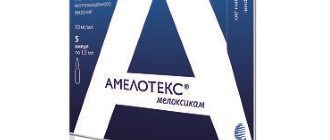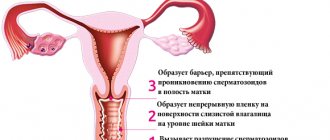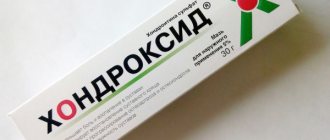Viral diseases of any location must be treated with appropriate medications. The best way to help the body cope is interferon, which is produced by the body of every person. But not always in sufficient quantities. The drug Kipferon can increase the concentration of this substance.
How does it affect the immune system? When is it most effective? Does it have any restrictions before use and does it cause any adverse reactions? - we will talk in this article.
pharmachologic effect
Kipferon suppositories are not monocomponent drugs. Its composition consists of immunoglobulins and alpha-2-interferon.
These substances give the drug several properties:
- Immunomodulatory.
- Antibacterial.
- Anti-inflammatory.
- Antitumor.
- Antiviral.
Mechanism of action of the drug
Such a high efficiency of Kipferon suppositories allows it to be used in the fight against a wide range of different pathogens, namely:
- Herpetic virus.
- Chlamydia.
- Rotavirus.
- Staphylococcus.
- Enterobacteriaceae, etc.
The drug Kipferon affects the growth of the pathogen and its reproduction, blocking these processes.
Development stops, as does intracellular metabolism, which leads to inhibition of bacterial activity.
This effect occurs due to the activation of the patient’s own protective functions and the release of special secretions.
We recommend viewing:
Strengthening the immune system, preventing postoperative complications
Kipferon is used to strengthen the immune system in adults and children who are often sick. Courses of 14 days are required, with an interval of 2 months. To get the effect, you need to take 2-3 courses. Kipferon is used rectally, 1 suppository 2 times a day.
Prevention of infection after surgery: 1 suppository 2 times a day every 12 hours. Kipferon is started to be used 3-4 days before surgery. Possible use after intervention. Treatment duration is up to 2 weeks.
Composition and release form
The drug Kipferon is available exclusively in the form of suppositories, which are used both vaginally and rectally.
Suppositories Kipferon
The dosage of alpha-2 interferon is 500,000 IU, and immunoglobulin is 60 mg.
Auxiliary components are also used in production:
- Paraffin.
- Fat.
- T-2-emulsifier.
Candles are available in 5 or 10 pieces per package.
Kipferon tablets were never released.
At what age is it allowed to take it?
As practice shows, this type of medication can be prescribed to infants from birth, but strictly as prescribed by the attending physician and in accordance with the given recommendations. One whole suppository is considered acceptable for use at a time for babies who have reached a body weight of 10 kg.
Indications for use
The drug Kipferon is available for both children and adults.
It is used in cases:
- Herpes.
- Dysentery.
- Salmonellosis.
- Coli infections.
- Rotavirus in children.
- Chlamydia with various complications in women.
- Inflammatory diseases of the respiratory system.
- Pneumonia.
- Relapses of bronchitis.
- Intestinal or vaginal dysbiosis.
- Children's hepatitis A, B, C of viral origin.
- The need for prophylaxis before surgery of any localization.
Photo gallery of testimony:
Salmonellosis
Rotavirus
Bronchitis
Pneumonia
Vaginal dysbiosis
Intestinal dysbacteriosis
Hepatitis A
Herpes
Instructions for use
The drug Kipferon is used in different ways, depending on the disease.
| No. | Name of the disease | Features of using candles |
| The medicine is used exclusively vaginally or rectally. In the first case, treatment should occur outside of monthly bleeding, and vaginal discharge should be wiped off before inserting the suppository. | ||
| 1 | Cervical erosion | From one to two candles per day. The duration depends on the speed of healing of the mucous lesion. |
| 2 | Chlamydia | For children, place one candle per day for no longer than 10 days. Adults are prescribed one to two suppositories per day for no more than two weeks. Treatment is complex with the use of antibiotics and eubiotic agents. |
| 3 | Viral hepatitis in children | For children under 7 years old, divide the candle in half and insert it in two steps. Up to 11 years of age, 3 suppositories are prescribed per day, and over 12 years of age - 4 pieces. |
| 4 | Genital herpes | Adults insert two to four suppositories per day, and children - one. The duration is respectively 10 days and two weeks. |
| 5 | Digestive infections | Use only after the intestines are free of feces. For children under 12, no more than two candles per day. For seniors, the quantity cannot exceed four pieces. |
Kipferon suppositories for children with colds
The best way to fight harmful viruses is a strong immune system. An organism weakened by illness often requires outside help. Drugs with antiviral and immunomodulatory effects will speed up recovery from ARVI. Kipferon suppositories for influenza in children demonstrate pronounced effectiveness. Let's take a closer look at the drug.
Operating principle
The basis of the drug is a combination of human recombinant interferon alpha-2b and a complex of immunoglobulins A, G, M - ready-made antibodies designed to fight infection. According to the Russian manufacturer, the drug has the following effects:
- demonstrates pronounced antiviral activity;
- activates innate and acquired immunity;
- protects cells from bacterial, chlamydial and mycoplasma infections;
- promotes the preservation and growth of beneficial intestinal microflora;
- accelerates the passage of immune responses.
Kipferon suppositories are used for influenza in children and adults. Suppositories are intended for rectal and intravaginal administration.
The medicine is successfully used in the complex treatment of acute respiratory diseases, which are not only viral, but also bacterial in nature. This category includes:
- tonsillitis;
- sinusitis;
- laryngitis;
- otitis media;
- sinusitis;
- tracheitis;
- rhinitis;
- pneumonia;
- bronchitis.
Note: the list of indications for use indicated in the instructions also includes intestinal infections caused by rotaviruses, salmonella, shigella and other pathogenic microbes. The drug is effective in the treatment of urogenital chlamydia in women.
Donor blood is used to make Kipferon suppositories, which causes unfounded fears among many consumers. During the production process, products undergo double control, which ensures their safety. Blood serum is checked for the absence of markers of viral infections and undergoes a quarantine procedure.
At the end of this period, the donor who donated blood is re-examined. If a carrier of HIV and viral hepatitis is detected, the collected blood plasma must be destroyed.
Application
The dosage of the medicine depends on the stated diagnosis, the severity of the case and the age of the patient.
Kipferon can be included in the treatment regimen for ARVI and influenza in children who have not yet turned one year old. In this case, it is recommended to use no more than 1 candle per day. Suppositories are preferably administered into the rectum after defecation.
For children under 12 years of age, the frequency of use of the product can be increased to 2 times a day. For adolescents over 12 years of age and adult patients, the daily dose is 3 pcs. The sooner treatment is started, the greater the effect will be achieved. The therapeutic course lasts on average 5-7 days.
Kipferon is not intended for the prevention of ARVI. Its use is indicated only in case of a confirmed diagnosis.
The drug is not allowed to be used in the first trimester of pregnancy, lactating women, or in case of individual intolerance to the components. These suppositories do not cause side effects, are combined with other drugs and are actively used in the complex therapy of viral diseases.
Reviews and analogues
Kipferon suppositories for ARVI in children usually demonstrate effectiveness, which is confirmed by numerous reviews. Here's what one mother writes about her experience using the drug:
— The New Year holidays did not go well for us. My daughter caught ARVI, and for two days in a row her temperature rose to 38.8°C. A cough appeared, which threatened to develop into bronchitis.
The doctor on duty at the clinic prescribed Kipferon suppositories. I was skeptical about them, but in vain. The low-grade fever lingered for a little longer, but after 3 days my daughter was like a cucumber, apart from a slight runny nose.
The only negative is that the drug is not cheap.
However, there are also negative reviews about this immunomodulatory agent, although there are much fewer of them. Here's what upset parents write:
— At the first signs of ARVI in the child, I started giving him Kipferon suppositories. That's what the pediatrician advised. However, only the ambulance doctors were able to bring down the baby’s temperature to 39.5°C.
On the third day, plaque was discovered on the child’s tonsils - a purulent sore throat developed. I had to take antibiotics. I completed the course of treatment with suppositories, but did not see much effect.
I believe that Kipferon failed in his task.
Among the analogues of the drug, suppositories Viferon and Genferon Light should be highlighted. They strengthen the immune system and help fight viruses. The basis of these drugs is also interferon alpha-2b. Viferon additionally contains vitamins E and C, and Genferon Light contains taurine.
These supplements have an antioxidant effect and prevent the development of chronic processes. Kipferon appears to be a more powerful antiviral agent due to the presence of an immunoglobulin complex drug in its composition. It is worth considering that its price is higher than that of its analogues.
In conclusion, it is important to note that before choosing a therapeutic regimen, you should consult your doctor . Self-medication of flu and colds can have negative consequences.
In the treatment of infections caused by viruses, agents that have an immunomodulatory effect are very popular. One of these drugs is Kipferon. This domestic medicine is added to the complex of treatment of various diseases. In what form is it produced, is it approved for use in children and what analogues can it be replaced with?
Release form
Kipferon is produced in suppositories, of which there are 5-10 pieces in one package of medicine. They are white, light beige or yellowish-white, with a specific odor, oblong in shape, and one end of the suppositories is pointed. The structure of the candles is uniform, but there may be a depression or an air core inside, and the color can be marbled.
Compound
Kipferon contains two active substances, one of which is alpha interferon type 2b. such recombinant human interferon in one suppository is 500 thousand international units.
The second active ingredient of suppositories is represented by plasma proteins, including immunoglobulins of types M, G and A. Their concentration in 1 suppository is 60 mg. They are called a complex immunoglobulin preparation (abbreviated as CIP), which determines the name of the product. These proteins are obtained from purified donor blood.
Additionally, suppositories include components due to which the suppositories keep their shape, but are sufficiently pliable and quickly dissolve in the intestine, and the active substances in them are evenly distributed. Such ingredients are emulsifier, paraffin wax, sodium hydrogen phosphate and dihydrogen phosphate, purified water, special fat and sodium chloride.
How do they work?
Due to the presence of both immunoglobulins and interferon in the drug, suppositories have a pronounced stimulating effect on the human immune system. Kipferon also has antiviral activity, in particular, antiherpetic effect.
As a result of the use of such a drug, both innate and acquired immunity are activated, normal intestinal flora is restored, the activity of immune cells and the production of interferon gamma increases.
The medication also acts locally - after administration of the suppository, immunoglobulins M and A act on the intestinal mucosa, which has a positive effect on local immunity.
Indications
Kipferon is in demand in the following situations:
- For acute respiratory infections of different nature - laryngitis, tracheitis, otitis and other pathologies;
- For bacterial or viral infections of the oropharynx;
- For rotavirus and viral hepatitis;
- For a bacterial intestinal infection, manifested by loose stools and vomiting, for example, with dysentery, salmonellosis or infection with pathogenic E. coli;
- With the flu;
- With intestinal dysbiosis;
- When infected with herpes viruses, for example, with chickenpox or herpes stomatitis;
- For chlamydia.
The drug can also be prescribed for prophylaxis, for example, with frequent acute respiratory viral infections or before a planned operation.
At what age is it allowed to take it?
According to the instructions included with the candles, Kipferon can be used by a child of any age, even a newborn baby. However, for young patients such a remedy should be prescribed by a doctor.
It is not recommended to give children of the first year of life any immunostimulating medications without consulting a pediatrician.
Contraindications
The only reason to refuse treatment with Kipferon is intolerance to any component of such suppositories. There are no other contraindications in the instructions for the candles.
Source: https://doctor-grebnev.ru/info/kipferon-svechi-dlja-detej-pri-prostude/
special instructions
The drug Kipferon does not in any way affect alertness or desire to sleep.
For the flu, the use of suppositories is exclusively rectal .
Instructions for the correct use of rectal suppositories
The dosage for infants is calculated by the doctor depending on weight .
Side effects
The only registered side effect of Kipferon is an allergic reaction to the components of the drug. The severity and severity of allergic reactions can vary from mild itching and redness to severe swelling. If you suspect an allergic reaction, you should immediately stop using the drug. If in the past a person responded with an allergy to the use of Kipferon, then in the future one should stop using this drug.
Allergic reactions may occur: skin rash, itching. These symptoms are reversible and disappear within 72 hours after stopping the drug.
These phenomena are not dangerous, go away on their own and do not require discontinuation of drug therapy.
Cases of overdose with Kipferon have not been described in medicine.
Analogues substitutes
There are enough similar medications to choose a worthy substitute.
They are cheaper in price or more expensive than Kipferon:
- Imudon is produced in lozenges based on a lysate of microorganisms. Manufacturer: Solvay Pharmaceuticals (France), Pharmstandard-Tomskkhimpharm OJSC (Russia).
- Genferon is available in the form of suppositories with alpha-2-interferon. (Russia).
- Genferon Light is created in suppositories with alpha-2b-interferon. (Russia).
- Laferobion is produced in the form of powder, lyophilisate and suppositories. (Ukraine).
- Viferon is available in cream, rectal and vaginal suppositories, and gel. (Russia).
- Polyoxidonium is prepared with azoximer bromide in the form of powder, suppositories and tablets. (Russia).
- Septilin is produced on the basis of mineral and plant substances in tablets and syrup. (India).
Photos of analogues:
Imudon
Genferon
Genferon Light
Laferobion
Viferon
Polyoxidonium
Septilin
What is better Viferon, Genferon, Polyoxidonium or Kipferon?
Viferon, Genferon, Polyoxidonium and Kipferon
The drug Kipferon differs from Viferon in its two-component composition. For this reason, the therapeutic effect of the first remedy is many times higher.
Genferon is a complete analogue of Kipferon candles.
Polyoxidonium has the same scope of application, although the active component is a completely different substance.
Drug interactions
Based on the results of clinical studies, Kipferon can be used in combination with antibiotics and probiotics, but only under strict doctor’s orders.
Doctors do not allow certain groups of drugs to be used together:
- Amphotericin B. Combination with this antibiotic increases the risk of kidney damage.
- Dicarbazine. An immunosuppressive drug and Kipferon taken together increases the risk of liver damage.
- Doxorubicin, Pegaspargase. The combination of interferon and antitumor agents enhances the toxic effects of the drugs.
Reviews from doctors
Makarchik Anna Sidorovna, pediatrician:
“The easiest way to catch a viral infection is for a child with an immature immune system. This can happen anywhere: at home, at a party, in kindergarten or on the way to it. I consider Kipferon suppositories to be the best treatment option in such cases, even for the smallest ones. They quickly begin to have a depressing effect on the pathogen, so the symptoms of the disease quickly disappear.”
Tonina Valentina Ignatievna, gynecologist:
“The herpetic virus, including the genital one, is difficult to treat. The drug Kipferon helps to overcome it in one or two courses.”
General information
First of all, it should be said that this medication has excellent antiviral and immunomodulatory effects. It makes it possible to improve the body's protective properties, effectively combating various symptoms of colds and other viral diseases. However, this is not all the healing properties of the drug. The use of Kipferon suppositories allows women to get rid of many different gynecological problems, thanks to their antibacterial and anti-inflammatory properties.











